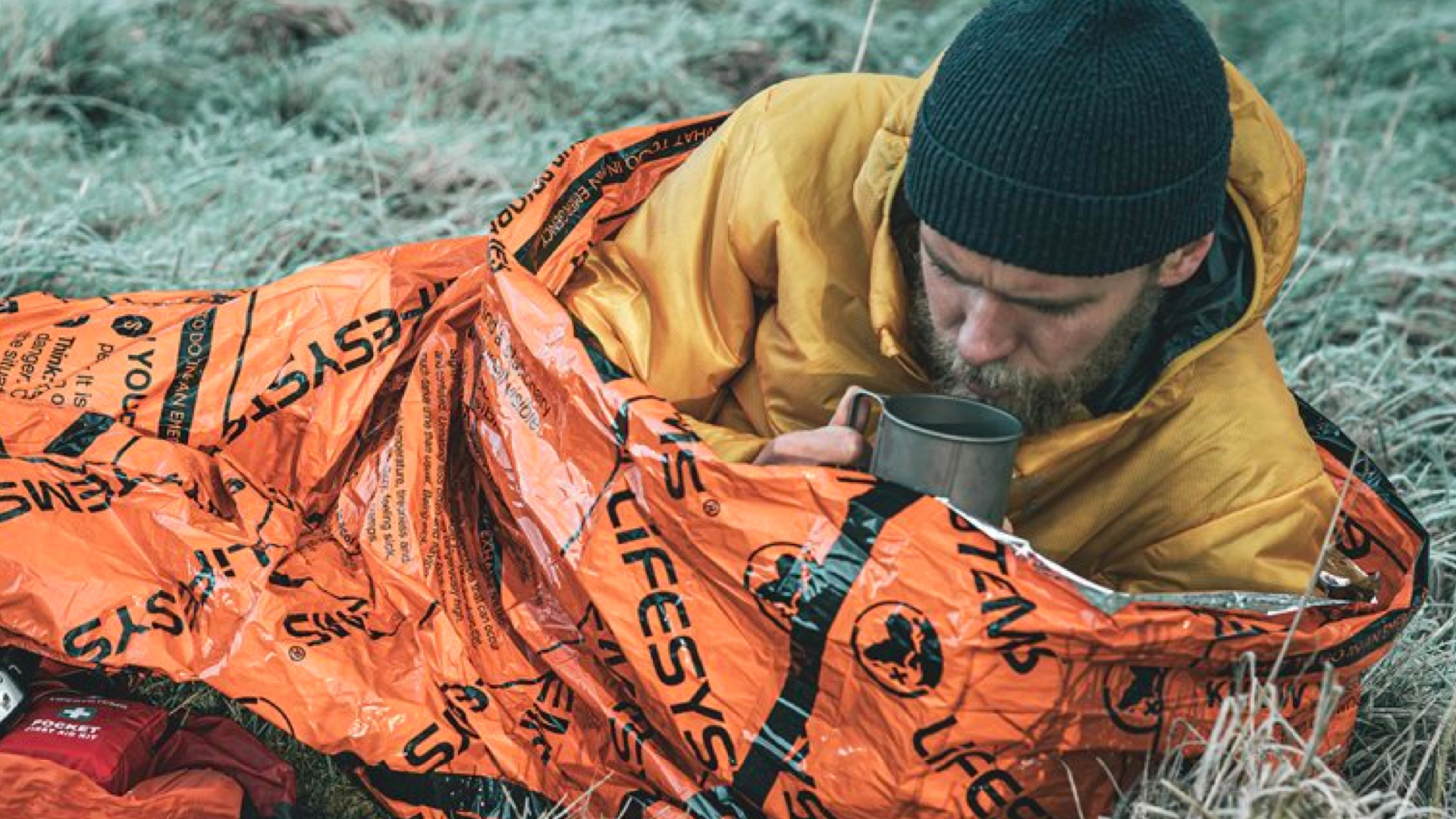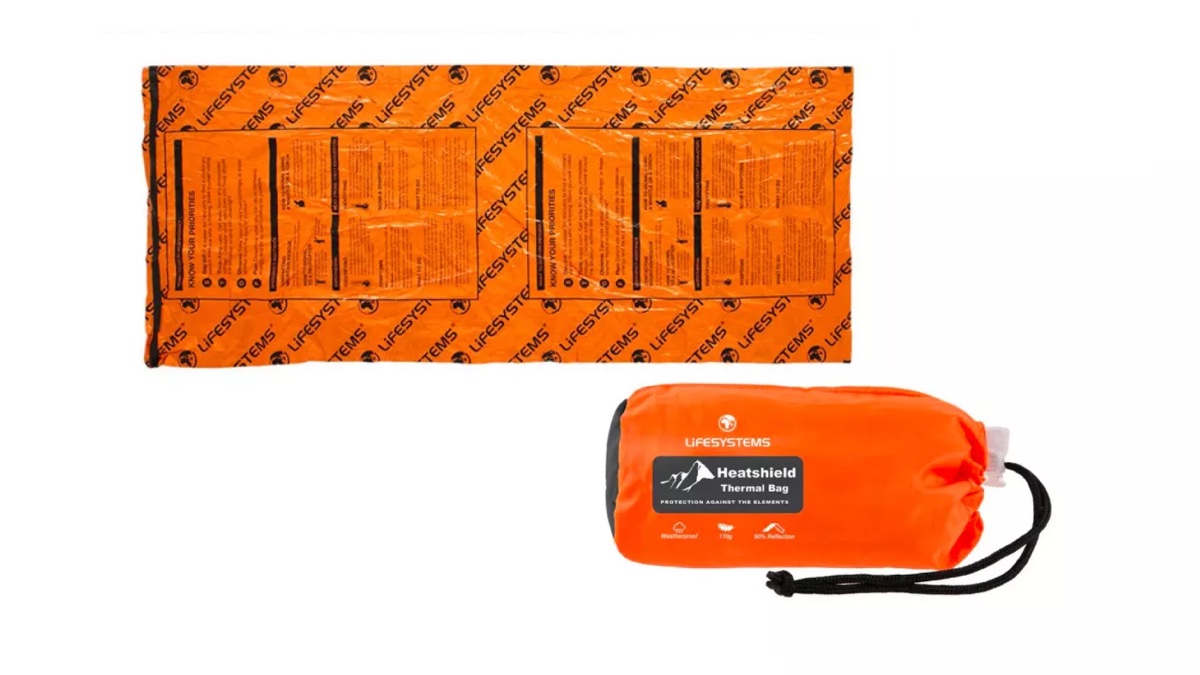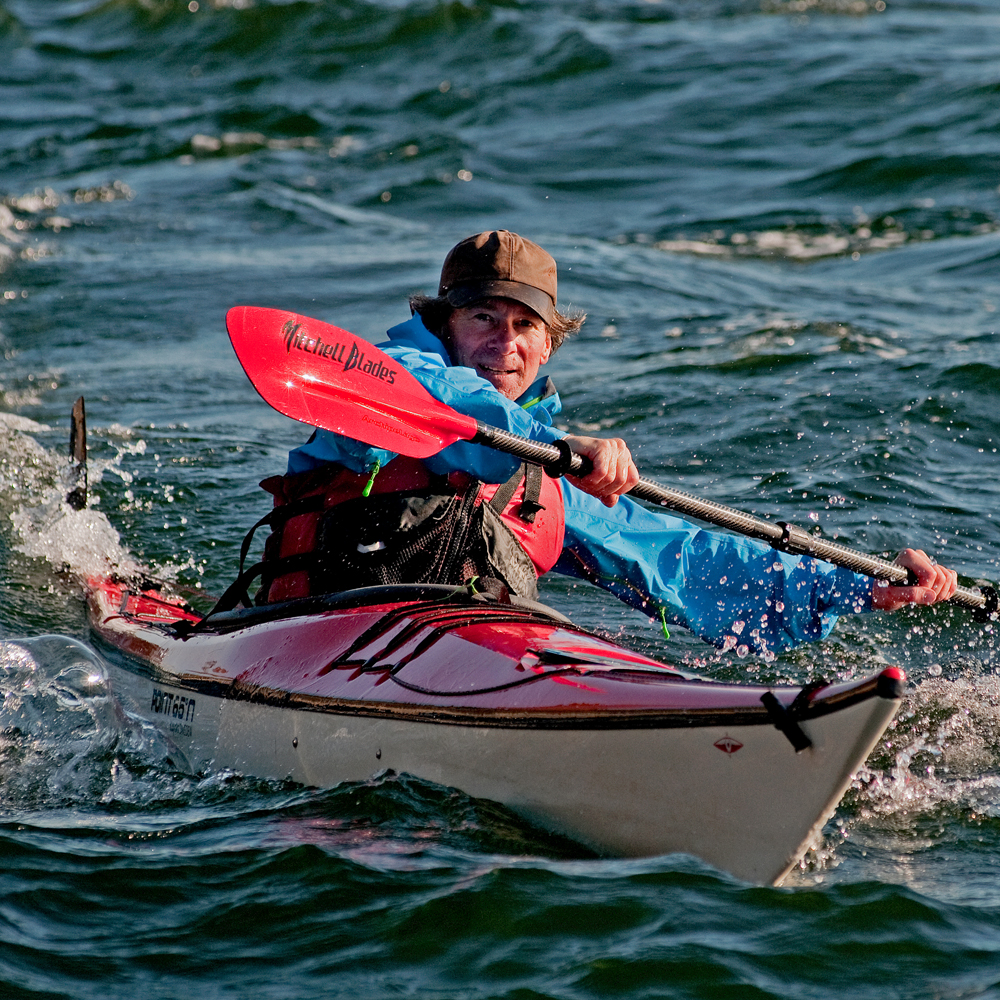Advnture Verdict
A pocket-sized, emergency bivy sack that could save your life, and is tough enough to be reusable.
Pros
- +
Light enough to carry in day pack or pocket
- +
Fully waterproof and wind proof
- +
Reusable
Cons
- -
Non-breathable material
You can trust Advnture
Lifesystems Heatshield Thermal Bivi Bag: first impressions
Intended as an emergency item rather than a regular bivy sack, the Lifesystems Heatshield Thermal Bivi Bag is nevertheless reusable, thanks to its thin-but-tough metallized plastic. Indeed, the storage sack it comes tightly folded and packed into, expands to take the bivy even when you can’t fold it away as small after use.
• RRP: £13.99 (UK) / Currently unavailable in the US
• Weight: 110g / 3.8oz
• Length: 210cm / 82.5in
• Width (shoulder & foot): 90cm & 90cm / 35.5in & 35.5in
• Materials: Metallized polyethylene with taped seams
• Mouth Closure: None
• Features: Metallized coating reflects up to 90% of radiated body heat, comes with storage sack
• Colors: Hi-viz orange
Barely the size of a tangerine, it is the kind of emergency kit that, if kept in a daypack, might make an unexpected night out infinitely more comfortable – or even save a life. Its two primary features are the silver inner surface, which reflects heat back from the body, and a bright orange hi-viz exterior that can be used to attract attention (with or without someone in it). But for bushcrafters it can be a useful backup if the weather turns worse than expected, or if a hastily constructed natural shelter doesn’t provide enough actual shelter.
Basic survival information is printed on the bivy, including how to signal to a rescue helicopter, diagnosing and treating hypothermia and the basics of the STOP – Stay put, Think, Observe, Plan – code as a response to an emergency in the hills.
Lifesystems Heatshield Thermal Bivi Bag: on the trails

For years I’ve carried an emergency bivy sack on trips where I think the weather might deteriorate beyond the comfortable limits of a tarp camp or my bushcraft skills.
The Lifesystems sack is totally waterproof so, yes, condensation will build up inside but, cannily deployed, it can give protection from far wetter persistent rain or torrential downpours.
Its generous, oblong size is easy to slide into while fully dressed, and it can also take a sleeping pad and sleeping bag. Though it’s not designed as first-choice bivy sleeping kit, I have used the Lifesystem sack as my weatherproofing on super-light hikes, reducing condensation by propping or suspending the mouth open with a couple of sticks or a cord to a tree branch.
When new and factory-packed, the folded sack is about the size of an orange, but – cleverly – the stuff sack lengthens making it easy to stuff the bivy back in again for reuse.
The hi-viz orange outer is meant to attract attention, therefore making it too garish for stealth camping, while the metallized reflective lining retains body heat, though the real warmth comes from cutting out wind chill and soaking rain.
After a wild childhood in west Cork, Jasper Winn began embarking on long cycles, walks, horse journeys and kayak trips across five continents – adventures he’s decanted into books, magazine articles, radio and television documentaries. Keen on low-tech but good gear, Jasper is an advocate of slow adventures by paddle, pedal, saddle, boot and sail. He has circumnavigated Ireland by kayak and cycled across the Sahara. Twice. Having ridden north-to-south across Algeria he discovered the only way to get back was to turn round and pedal north again.


